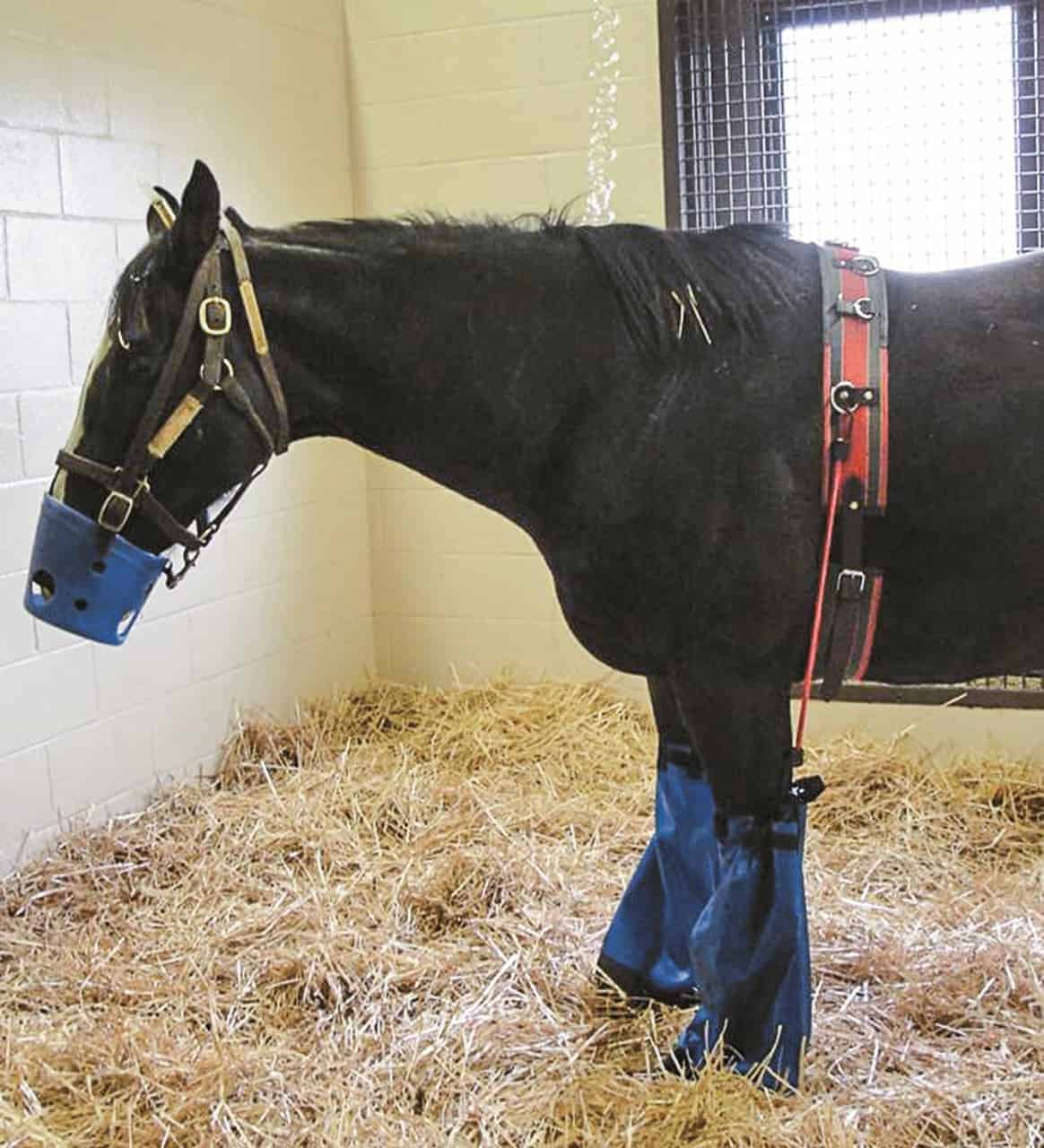Preventing and Treating Sepsis-Related Laminitis

Horses with sepsis—a systemic inflammatory response to a suspected or diagnosed bacterial infection, such as colitis, endometritis, or pneumonia—are already in a precarious position. However, they’re also at risk of developing sepsis-related laminitis, a serious complication that can quickly prove fatal.
Fortunately, researchers have made strides in understanding how to prevent laminitis and are learning what treatment options can help if it does develop. Andrew van Eps, BVSc, PhD, MACVSc, Dipl. ACVIM, associate professor of equine musculoskeletal research at the University of Pennsylvania’s School of Veterinary Medicine, in Kennett Square, reviewed these techniques at the 2017 American Association of Equine Practitioners Convention, held Nov. 17-21 in San Antonio, Texas.
“Sepsis is differentiated from simple infection by the presence of a … dysregulated host response—inflammatory, coagulopathic (blood-clotting), and metabolic derangements—and organ dysfunction,” van Eps said. Laminitis, defined as inflammation of and damage to the lamellae, which suspend the coffin bone inside the horse’s hoof, “seems to be a form of end-organ dysfunction/failure that is ultimately most important in terms of recovery for the adult horse with sepsis
Create a free account with TheHorse.com to view this content.
TheHorse.com is home to thousands of free articles about horse health care. In order to access some of our exclusive free content, you must be signed into TheHorse.com.
Start your free account today!
Already have an account?
and continue reading.

Written by:
Erica Larson
Related Articles
Stay on top of the most recent Horse Health news with











